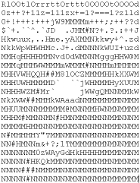Oops, your profile's looking a bit empty! To help us tailor your experience, please fill in key details like your SketchUp version, skill level, operating system, and more. Update and save your info on your profile page today!
⚠️ Important | Libfredo 15.6b introduces important bugfixes for Fredo's Extensions Update
140 charachter picture encoding
-
http://www.flickr.com/photos/quasimondo/3518306770/in/photostream/
A rather impressive effort in optimising the encoding of a picture.
-
My alternative approach using ASCII characters... : )
...
Large, but 2116 characters

Medium, but 564 characters

Small, 140 characters - BUT you need to squint a bit...


Advertisement







